Yiwu big tree puer has coarse stems and apparent long black strips. These big, slow-growing trees grow with minimal human intervention on the terroir of Yiwu Mountain in China’s Yunnan province, which boasts rich biodiversity. Fine white hair found on tea stems are an indication of its long domestication. The dry tea has a subtle sweet honey scent.
Basic brewing recommendations
To properly prepare this tea, we recommend using the gongfu tea brewing method. Either a gaiwan or zisha teapot will work. Weigh 7–10 g of puer leaves and infuse for 10 seconds, then strain. Discard this first brew; it is used to wet the leaves and prepare for a more thorough upcoming infusion.
For the next four brews, the steeping time remains at 10 seconds. For the sixth through ninth brews, the steeping time is 20 seconds. This brewing guide serves only as a reference. If you prefer a stronger brew, you could extend the brewing time, or reduce it if you prefer weaker.
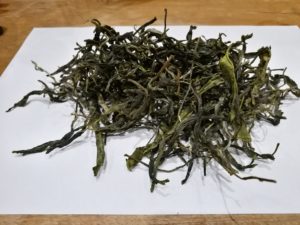
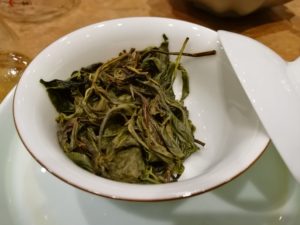
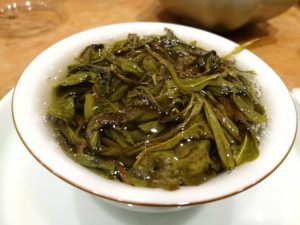
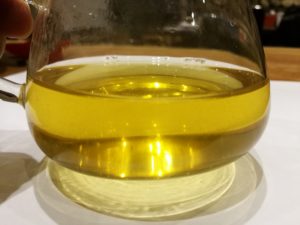
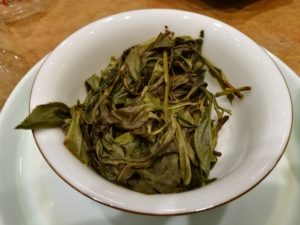
Infusions
From a distance, the second brew yields a lovely robust fragrance, with a combination of honey, orchid, and wooden notes; honey is the main scent. With the cup right under your nose, a lemon note is detected that is neither citric nor sour. The tea’s texture is mellow and thick, with a slight cooling bitterness to the flavor. It also has a long finish. The sweetness lingers until the next cup and the mouth-watering effect is long-lasting. You can also feel a cooling effect in your palate and tongue when breathing in and out.
The third brew exhibits a stronger floral scent amid the honey fragrance. The liquor is more robust than the second brew without being intrusive. The bitterness remains subtle and pleasant, and the aroma withers away.
The cooling effect stands out the most in the fourth brew. The aroma is not as strong as the first three brews, but is presented as distinctive with layers.
In the fifth, sixth, and seventh brews, the woody aroma surfaces, reminiscent of a forest full of wildflowers.
After the seventh brew, the steeping will gradually weaken. It begins to taste watery around the twentieth brew.
Customizing your infusions
In general, keep brewing time longer if you prefer a stronger taste. The bitterness will be more distinct this way. If you infuse with a shorter time, the liquor will soften in taste.
The ideal brew is a subtle bittersweet balance, and a thick but mellow texture for mouthfeel. The idea is to not make each infusion taste identical. The character of the tea should evolve and meander pleasantly; you may notice an adjustment on infusion time is needed. Tea brewing is not automatic by a mathematical recipe.
Ambient weather conditions and different water sources also have a subtle impact on the tea’s taste and aroma. If you are brewing in hot, humid conditions, your gaiwan will retain heat more than if the air is dry and slightly cool. Feel free to play with the method and adjust for your palate! You will be able to achieve the perfect cup with intuitive testing and practice.
For more tasting notes, subscribe to Tea Journey Magazine today. Take tea knowledge wherever you go, on your tablet or on your phone.